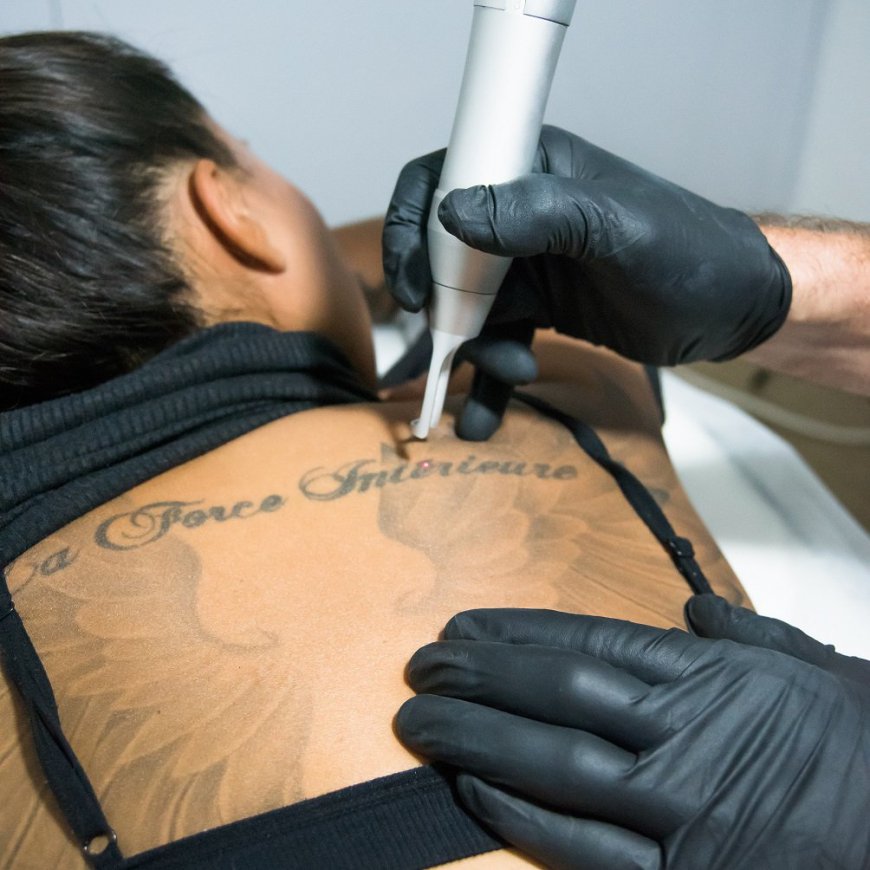Trust the Process: Laser Tattoo Removal Simplified
Opt for Laser Tattoo Removal in Dubai to permanently get rid of your tattoos without suffering from botched results.

Join our subscribers list to get the latest news, updates and special offers directly in your inbox

Laser tattoo removal has become a popular and effective method for those looking to erase or alter unwanted ink. This procedure uses advanced technology to target and break down tattoo pigments, allowing the body to naturally eliminate them over time. The process involves the use of high-intensity laser beams that are absorbed by the ink particles in the skin. This energy causes the pigments to fragment into smaller pieces, which are then gradually removed by the body's immune system.
Laser Tattoo Removal in Dubai works through a series of precisely calibrated laser pulses. Each pulse targets specific colors of ink, based on the wavelength of the laser light. The laser's energy is absorbed by the ink particles, causing them to break into smaller fragments. These fragments are then removed by the body's lymphatic system. The efficiency of the process can depend on various factors, including the size, color, and depth of the tattoo, as well as the individual's skin type and overall health.
Different types of lasers are used in tattoo removal, each designed to target specific colors and types of ink. For example:
Q-switched lasers: These are commonly used for their ability to deliver high energy in short bursts. They are effective for breaking down dark ink pigments like black and blue.
Pico lasers: These are newer technology that uses ultra-short pulses to target ink particles more precisely, minimizing damage to surrounding skin and potentially reducing the number of treatments needed.
Fractional lasers: These lasers create microscopic treatment zones in the skin, promoting the body's natural healing process while targeting the tattoo pigments.
The tattoo removal process generally involves several sessions, each spaced several weeks apart. During each session, the laser is used to target the tattoo ink, and patients may experience sensations ranging from a mild sting to a slight discomfort. After treatment, the tattooed area may appear red and swollen, similar to a sunburn, but this usually subsides within a few days.
Before the procedure, the treatment area will be cleaned and a topical anesthetic may be applied to minimize discomfort. During the session, you'll wear protective eyewear to shield your eyes from the laser light. The technician will use a hand-held device to direct the laser at the tattoo, which will be absorbed by the ink particles.
Post-treatment, it's essential to follow aftercare instructions, which typically include keeping the area clean and moisturized, avoiding direct sun exposure, and refraining from picking at scabs or blisters. These steps help ensure the best possible results and reduce the risk of complications.
The results of laser tattoo removal can vary based on several factors, including the tattoo's size, color, and location. Typically, multiple sessions are required to achieve the desired results. As the ink particles are broken down and absorbed by the body, the tattoo will gradually fade. It's important to have realistic expectations and understand that complete removal may take time.
Recovery from each session is usually swift, with most people resuming normal activities within a day or two. However, it's crucial to adhere to post-treatment care guidelines to support the healing process and avoid potential complications.
There are several misconceptions about laser tattoo removal that can lead to misunderstandings:
Laser tattoo removal is always painless: While many people tolerate the procedure well, some discomfort is common. Anesthesia and pain management strategies are available to make the experience more comfortable.
One session is enough: Most tattoos require multiple treatments to be effectively removed. The exact number of sessions depends on various factors, including the tattoo's complexity and the individual's skin response.
Laser removal is guaranteed to be 100% effective: While laser tattoo removal is highly effective, some residual ink may remain. Advances in technology continue to improve results, but complete removal isn't always guaranteed.
When considering laser tattoo removal, it's essential to choose a qualified and experienced professional. Look for a clinic with a proven track record and certified technicians who use advanced laser technology. A reputable practitioner will conduct a thorough consultation to assess your tattoo and discuss your options, ensuring a tailored approach to meet your needs.
Laser tattoo removal is a sophisticated and effective method for those looking to address unwanted tattoos. By understanding the technology, process, and what to expect, you can make informed decisions and set realistic expectations for your tattoo removal journey. Trusting the process and working with a qualified professional will help you achieve the best possible results and ensure a smooth experience throughout the treatment.
TheSixMoving Sep 23, 2024 2 14707
veronicablogz Sep 10, 2024 0 2862
luxuryresidences Apr 30, 2025 0 2600
sonalikaverma Oct 7, 2024 0 665
Zanto Oct 9, 2024 0 105
Zanto Oct 7, 2024 0 156
Zanto Oct 2, 2024 0 129